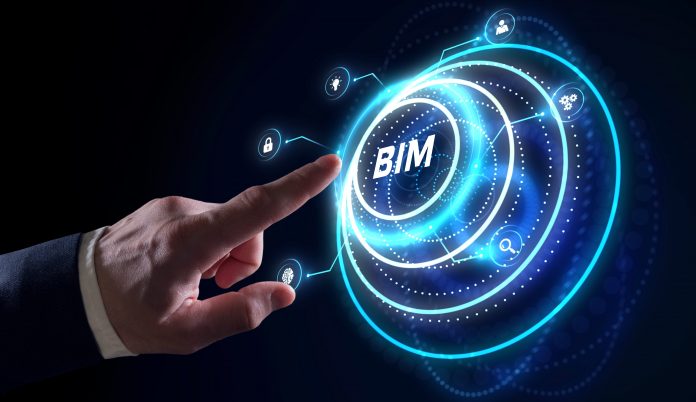In this article, Hugo Testa, BIM manager at Merit explains to PBC Today how BIM has the potential to transform the construction industry, by reducing project delays and speeding up construction time
McKinsey data shows that the construction industry is one of the sectors with the lowest level of investment in innovation, especially digitalisation. While BIM has been used increasingly widely and many companies start to understand the benefits of digitalisation, there is still a long way to go for the construction industry to adapt and potentially undergo a major transformation.
Digitalisation with BIM
BIM has introduced a new approach to the architectural, design, and construction industries by enabling real-time collaborative work. Today, Revit and other 3D modelling software are used at a large scale, which practice however does not allow companies to explore all opportunities offered by digitalisation.
While collaboration is encouraged through these systems as well, often collaborative work is not organised in the most efficient way. In many cases, the various contractors aim to simplify and reduce costs for their own on-site installation phase, without considering the impact on other disciplines.
This could lead to a situation, where 3D modelling was completed well and on time, but during the construction process, the various changes led to delays and created bottlenecks by additional necessary re-work. This could also result in a building that significantly differs from the original design. Such issues all have a significant impact on timing, costs, and in cases, quality.
BIM has the potential to speed up processes and move projects forward
BIM, when used to its full potential, enables collaborative work on an ongoing basis, where workshops and universal access to data and design can not only avoid delays but on the contrary, significantly speed up processes and move projects forward.
As an example, at Merit, we believe in a vertically integrated collaboration of all disciplines – including design, fabrication, installation – from the start of our projects.
We have set up our own Virtual Design and Construction (VDC) team, dedicated to delivering enriched model data allowing workflow automation, design focused on productivity through offsite manufacture, as well as research and development.
The team’s purpose is to optimise and automate workflows to facilitate data mapping between the various departmental systems, and through this, to improve the full construction process for all our projects.
Beyond the collaborative design space
To understand all the opportunities offered by digitalisation, BIM is an excellent starting point. It is important to see that BIM itself can be more than just a shared workspace or an improved alternative to AutoCAD.
Visualisation and simulations can bring strong benefits to construction projects. By testing viability, running through planned construction sequences, and testing potential future scenarios, including a variety of weather events, well ahead of the actual start of the build, related delays could be avoided or the impact of any re-scheduling clearly understood.
This can also help with the optimisation of projects, lowering the risk of capital costs during the actual construction phase. Tailored automated workflows enable auto-generated fabrication, installation, time, and cost simulations in addition to Bill of Materials.
Leveraging the capabilities of BIM can go beyond visualisation, simulation, and future planning
Additional layers, called BIM dimensions, can further facilitate the projects. Such additional dimensions could include real-time costing schedules from early stages onwards; the all-important sustainability measures to understand embedded carbon, energy efficiency and more.
Another further dimension of BIM can equip facility managers to oversee activities throughout the whole lifecycle of the facility. Genuine digital twins of buildings can go into minute details on a millimeter-scale to aid construction and offer valuable insight in the long term.
Advanced digital design at the construction phase can help facilities management teams to keep accurate asset-based data, including manufacture or model numbers; asset barcoding; or – as an example – by attaching beacons to maintainable assets to enable easy identification within the building at any time. Monitoring of function and performance would be possible through live data streams even remotely, utilising digital twins.
BIM has the potential to be a significant advantage for the healthcare sector
While today most digital twin initiatives focus on the housing and education sectors, such as the National Digital Twin project, there are more opportunities to explore.
A sector that could significantly leverage advantages is healthcare, where the government is driving the building of 40 new hospitals and healthcare facilities and where an expressed priority is to use digital solutions at the delivery of these projects.
With digitalisation comes shorter construction times, even on highly technical buildings such as biopharma manufacturing facilities, and speed is important to get new medicine on the market as soon as possible.
Merit had been appointed to deliver the UK’s first CAR-T Cell manufacturing facility for Autolus Therapeutics, where our delivery time is approximately 24 months shorter compared to traditional building methods and also significantly faster than other off-site modular approaches, thanks to the benefits enabled by our targeted BIM approach.
Overall, BIM modelling offers virtually unlimited opportunities for the construction industry to build on, enabling faster construction times without compromising on quality or costs. Careful planning, advanced insights, scenario planning, and adequate tailoring can improve return on investment for construction projects in any sector.
Hugo Testa

BIM manager
Merit

















